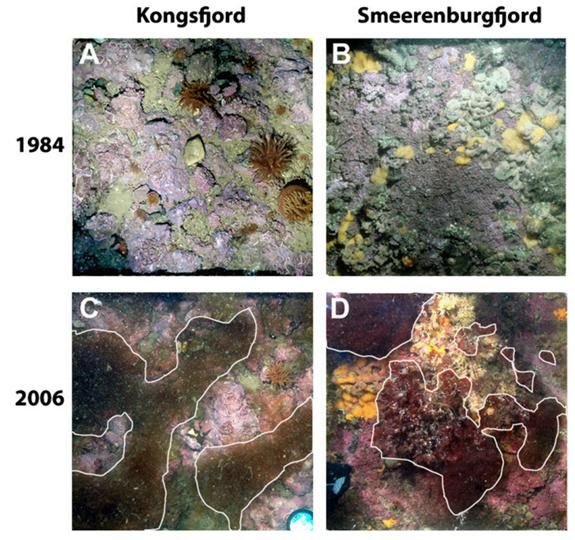Arctic Algae Infiltration Demonstrates the Effects of Climate Change
A sudden shift seen off the coast of Svalbard demonstrates how the world’s ecosystems will be reformed by persistent climate change
/https://tf-cmsv2-smithsonianmag-media.s3.amazonaws.com/filer/2012081512100908_15_2012_svalbard-algae.jpg)
A sudden shift seen off the coast of Svalbard, a tiny island cluster that lies between the Norwegian mainland and Greenland, demonstrates how the world’s ecosystems will be reformed by persistent climate change, reports Brandon Keim in Wired.
Along rocky coastlines of the Arctic Ocean, a radical change is taking place, perhaps as profound as vanishing sea ice but less evident to the eye. Ecological foundations are shifting, with existing algae replaced by warmth- and light-loving species. It might not seem like much, but algae form the base of ocean food chains, and the change is happening fast.

Keim describes a recent study, lead by Susanne Kortsch of the University of Tromsø, that found a surprising jump in the prevalence of brown algae on the sea floor of Svalbard’s fjords. The study says that over the past thirty years the Arctic has warmed twice as fast as the global average of 0.2°C per decade. Combined with shrinking Arctic sea ice cover, considerable changes have also been seen in the timing and availability of sunlight, and the temperature of the water. These slow but steady changes have triggered a dramatic shift in the types of life that call the fjord floor home. The paper says, “The abrupt, substantial, and persistent nature of the changes observed is indicative of a climate-driven ecological regime shift.”
“Regime shifts,” says Keim, are when “one set of plants and animals is almost entirely replaced by another.”
This new discovery builds on another recent surprise, when scientists found blooms of algae underneath the floating ice in the Arctic Ocean which scientists also suggest may have a link to climate change.
More from Smithsonian.com:
/https://tf-cmsv2-smithsonianmag-media.s3.amazonaws.com/accounts/headshot/smartnews-colin-schultz-240.jpg)
/https://tf-cmsv2-smithsonianmag-media.s3.amazonaws.com/accounts/headshot/smartnews-colin-schultz-240.jpg)